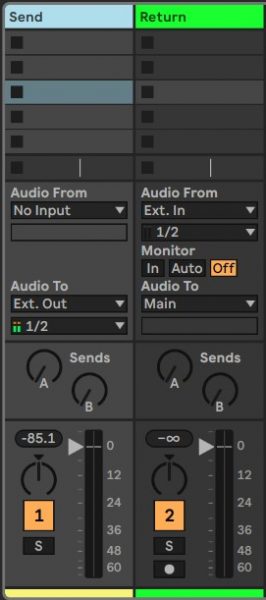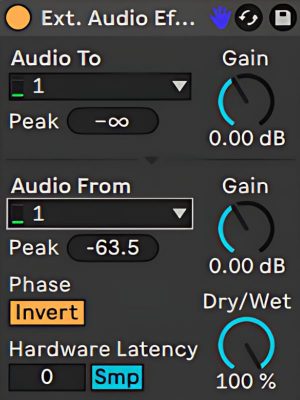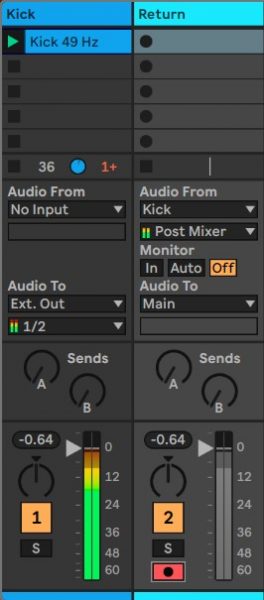External Audio Effect
Audio equipment is becoming increasingly affordable. Effect units from the 1980s and 90s are sold for peanuts these days, and if you’re handy with a soldering iron, you can even build vintage audio gear yourself.
Integrating these outboard effects into Ableton might seem complicated at first. But luckily, Ableton’s external audio effect plugin makes it a breeze.

The traditional approach
The easiest way to integrate hardware effects into your DAW is to send a track’s output straight to an external output on your audio interface.
I usually use this approach when I’m nearing the end of the mixing stage, and I want to add some analog compression to the drum bus, for example. I then simply record the result to a new audio track.
If you’re using hardware monitoring, this is a perfectly acceptable solution. The problem, however, lies with software monitoring. Converting your digital signals into analog and vice versa takes time. This causes latency, meaning the track you’re listening to is out of time with the rest of the instruments.
As soon as you’ve finished recording, things line up again.
External Audio Effect
The benefit of the External Audio Effect plugin is that it compensates for this ‘loopback’ latency. So, even when you change your buffer size, the track will stay in sync.

You can select a mono or stereo input and output and adjust the gain. There’s a phase invert switch, so flip the polarity, a dry-wet control, and a manual latency offset.
And since the external audio effect acts like a plugin, you can insert it wherever you want in the plugin chain.
Bouncing
The only thing you need to remember with external audio effects is that you need to record them at some point. You can export your track like normal, but Ableton automatically creates a ‘real-time bounce’ that way.

I typically create an additional audio track and record my processing there. An audio interface with multiple inputs and outputs lets you record multiple tracks simultaneously. Provided you’ve got multiple outboard effect units.
When all you’ve got is a single EQ or Compressor, you must record multiple passes, one for each track. This method allows you to process the tracks later with additional EQ, which is useful for future revisions.
Conclusion
The external audio effect plugin allows you to turn any hardware into a plugin. Guitar pedals are probably my favorite, but analog compression, saturation, or EQ are also nice to warm up your tracks.
If you want to learn more about hardware, feel free to join my Electronic Music Studio’s Facebook group.

